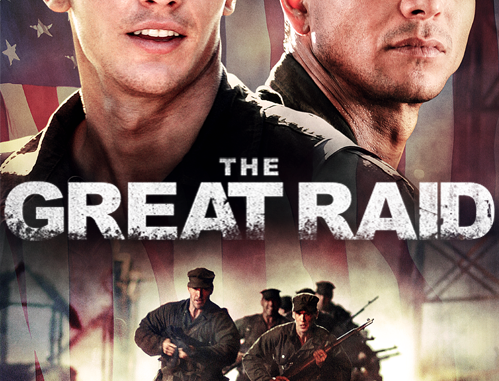
In history, the United States military has made many coordinated Special Force rescue and assault operations resulting in major successes or catastrophes with significant life loss. The most triumphant and successful rescue operation in the United States Military history, portrayed in The Great Raid, or the most near-disastrous mission involving the entrapment of US Army Rangers, depicted in Black Hawk Down, both gained enough recognition to become major modern Hollywood productions. The movies are actually highly accurate on the perception of order of events, but had slight biased perspectives leaning towards the American soldiers and minor cultural influence despite the modernity of the movies. However, the movies represent the events in a clear fashion to precisely inform the public of the events that may never be mentioned.
In the video, Black Hawk Down depicts the actual events of the Battle of Mogadishu in 1993, in which an Army Special Forces, led by General William Garrison, attempted to capture Somalian warlord Mohamed Farrah Aidid. The plan was that the Delta Force would raid the Olympic Hotel in Mogadishu and capture Aidid and his top advisers, and then the Army rangers would form a perimeter while the extraction force would move in and load the prisoners into the Humvees. However, the forces faced extremely high resistance from the local Somalis, resulting in a seventeen-hour battle, a mission that should have taken thirty minutes. Casualties were high at eighteen soldiers dead and eighty-four wounded.
The producers of the video Black Hawk Down did do an excellent job with the facts by placing factual subtitles at the beginning and end of the movie to explain the reasoning of the campaign and the results of the assault. After much critical analysis, it is evident that the facts, events, and the numbers in the movie were very accurate, but not perfect and having some inaccuracies worth pointing out. Since little knowledge or discussion in detail has been provided from minimal resources, precise facts including specific names were ignored. Like most Hollywood productions, additional drama was added to the movie to help appeal to the masses, like personal relations and disastrous deaths. Also from the movie was a somewhat biased view on behalf of the American soldiers, which made the Somalis look like savage barbaric terrorists, only wanting death upon the soldiers trying to aide them. Although, the intervention was a humanitarian effort to help them with the mass starvation, but the concept was slightly dramatized by exploring the personal feelings and expression of some of the soldiers on the issue of the Somalia crisis. The video was also shot from the view of only the American soldiers and does not present the stories of the civilian casualties. Despite how modern the film is, it still has somewhat of a cultural influence, partly because the video was created about eight years later from the actual battle. So an influenced view should be expected since the Somalis had brutally attacked the Americans. Controversies exist that the Somalis who engaged the American soldiers may have believed themselves to be responding to what they thought as unjust American and international military tactics used against them. The film also portrays the delays in the rescue mobilization of UN forces as stemming on the part of those forces at not being informed about the mission, signifying they were willing to let US soldiers die for insignificant policies. The video also managed to recognize the Malaysian soldiers involved in the rescue mission and the Malaysian soldier that died during the rescue attempt. Another minor factual error included the role and position of Sgt. Eversmann, the main character of the movie, who in reality returns to base with his convoy during the day with the prisoners. However, in the film he stays in the battle and is one of the soldiers trapped in the night siege. Black Hawk Down concludes with one more force heading back to the city to gather the remaining soldiers and then provides relevant facts of the results. It states the casualties on both sides, somewhat pulling away from that biased view. It also states an outlook into the future which mentions the eventual death of Aidid and Gen. Garrison’s acceptance of the responsibility and later retirement. It almost gives the notion of a defeat as the battle ends, but the subtitles save it from this and mention those details, resulting in an overall victory with the cost of eighteen American lives.
In the film, The Great Raid illustrates the events of the most successful military rescue mission in the Army’s history, the raid of Cabanatuan in 1945. Over five-hundred Allied soldiers were inside the Cabanatuan camp, located in the Philippines, under Japanese occupation. These men were all survivors of the battles of Bataan and Corregidor, which included the horrific Bataan Death March, and Bataan’s surrender on April 9, 1942. Fearing the murder of all the POWs in the camp, Lt. General Walter Krueger demanded a raid and gave command to Lt. Colonel Henry A. Mucci, who ultimately organized the raid. The raiders were the U.S. Army’s Sixth Ranger Battalion which consisted of about 120 men. Mucci and his forces were to infiltrate the camp at nightfall, overcome the guards, liberate the prisoners and return them to friendly lines as quickly as possible. Meanwhile the assisting Guerilla forces would prevent a reaction from local Japanese gathering at a nearby city. The men left on January 28th and waited until the night of January 30th to perform the raid. It was very successful and only two rangers lost their lives and no POWs died. Over 500 Japanese troops were killed or wounded during the attack.
The Great Raid is perhaps the most accurate Hollywood movie, not branded a documentary, on this event up-to-date and the most accurate film that I have ever seen based from a historical event. The producers did an outstanding job at gathering and maintaining that proper facts throughout the video with very few errors. All the numbers for the casualties, amounts of vehicles destroyed, guards, and all other intelligence information were almost perfect and clearly stated by a character or subtitles throughout the video. Many of the statistics were actually visibly displayed through the raid, providing the ability to account for them. The film still has a cultural influence and a bias viewed towards the POWs. The video, whose point of view was predominantly on the POWs in Cabanatuan, displayed the horrors in the camp and the mistreatment and torture the Japanese inflicted upon the men. Examples include executions for attempted escapes and starvation with no motive. It glorified the Americans and their cause and that the Japanese were just murdering mass quantities of the POWs like during the Bataan Death March. Also footage shot in Manila, portrayed the fear in the Philippine people of the Japanese occupation and their brutality towards anybody who opposed them. Even despite the fact the Raid on Cabanatuan took place in 1945; cultural influence played a major role in the intention to sympathize for the POWs and discontent for the Japanese. However, The Great Raid was very accurate it had somewhat major but hardly noticeable errors. Once was that the leader of one of the two platoons was incorrectly named from the actual occurrence. The film named this character Lt. Riley of the leader of Company F. In reality, the leader of F Company was 1st Lt. John Murphy. The video also declared that Lt. Riley had fired the first shot to signal the beginning of the raid at 1930 hours (7:30). It was actually fired by Lt. Murphy at 1945 hours (7:45). It may seem to be only a minor time variation, but since the raid did not last that long itself, fifteen minutes is quite a bit of time. Once again, there was a bit of added drama to the video, but not quite as personal as Black Hawk Down. However it did involve a cryptic love relationship between the high ranking POW in the camp and a female who worked for the Underground, which was an organization in Manila that worked to gather medicine for the POWs. The film did a terrific job at explaining the events leading to the raid with actual footage with a narrator in the format of a documentary before the start of the video and subtitles to affirm the outcome from the raid at the end of the movie.
The Great Raid and Black Hawk Down are two remarkable videos with very accurate interpretations of the events of the Raid on Cabanatuan Camp in 1945 and the Battle of Mogadishu in 1993. To avoid tedium, the producers cleverly produced documentaries with added drama to attract all audiences. The only chief dilemmas would be the biased analysis of the videos, which is practically inevitable in this day of Hollywood videos.
Proudly WWW.PONIREVO.COM



